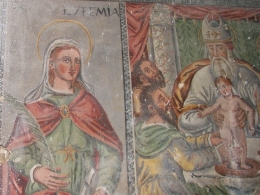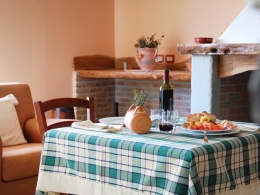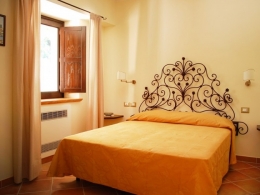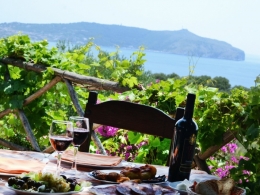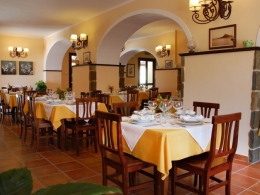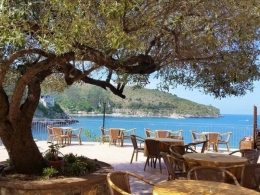San Mauro La Bruca e San Nazario
 Sito web: nd
Sito web: ndSet on the slopes of a green hill, at 450 meters above sea level and surrounded by secular chestnut woods and olive trees, San Mauro La Bruca is a small municipality of Cilento which, together with its hamlet San Nazario, currently reaches a population of about 800 inhabitants. The town's name derives from its patron saint, Saint Maurus, disciple of St. Benedict in Subiaco. The origin of the name "La Bruca" might have a Greek root that can be connected to the verb “brùo” = to be filled, to bloom in abundance, in reference to the abundance of trees and dense vegetation of the area. Historical-archaeological evidences of the municipality’ s existence are attested since the Iron age; an important stage has been the dependence of San Mauro, together with the nearby village of Rodio, on the Military Sovereign Order of Malta which lasted until the early 1700s.
The ancient city developed around the church dedicated to Saint Maurus of which, today, only a few ruins remains. But today the most populous area of the town is located around the present-day parish church consecrated to Saint Euphemia, dating back to the time of San Mauro’s dependence on the Knights of Malta. Of this Church remains only the presbytery with frescoed dome of 1511.
San Mauro has long been a pilgrimage destination for residents of neighbouring towns, indeed such was the devotion to the Saint that every year hundreds of people went on foot there.
If you visit San Mauro you can find traces of its history by visiting the parish church, the crypt decorated with frescoes portraying Sant'Eufemia, admiring the numerous reproductions of the Knights of Malta’s cross or the remains of the original church of San Mauro, just a few metres from Our Lady of Graces’s chapel. We recommend you a stop on the main square to enjoy the view of Palinuro and the coast.
The hamlet San Nazario
San Nazario was founded by Richerio, Abbot of Montecassino, around the 11th century. The small village is situated in a valley surrounded by three large hills and open on the side where a torrent flows (towards the sea).
We must emphasize that some archaeological finds, along the river in a place called "La Mannìna", have led to the hypothesis of the presence of a settlement and a religious area dating back to the Iron Age. There are four pitches limited by walls made of large stones, which follows the river for about 200 m until they completely disappear on the top. The thick walls suggest that, originally, they also had a defensive function.
The first inhabited nucleus arose and developed around the old Basilian abbey dating back to the 8th-9th century. The monastery, known for the production of vellum used for parchments, had a period of fame when in 940 Saint Nilus, fleeing from Calabria, stopped over here where he next became a monk. In 966 Saracens raided the Abbey of San Nazario that underwent a period of neglect and decay, lasted nearly a century. In 1044 Benedictine monk Richerio, starting from Montecassino, went to San Nazario restoring the ancient monastery. The population began to grow and develop around the monastery and they founded a small village, made mainly of farmers and shepherds.
Very interesting is the naturalistic path of Valle dei mulini along the Brulara River studded with ancient watermills, testimony of an economy based on agriculture and sheep-farming.



